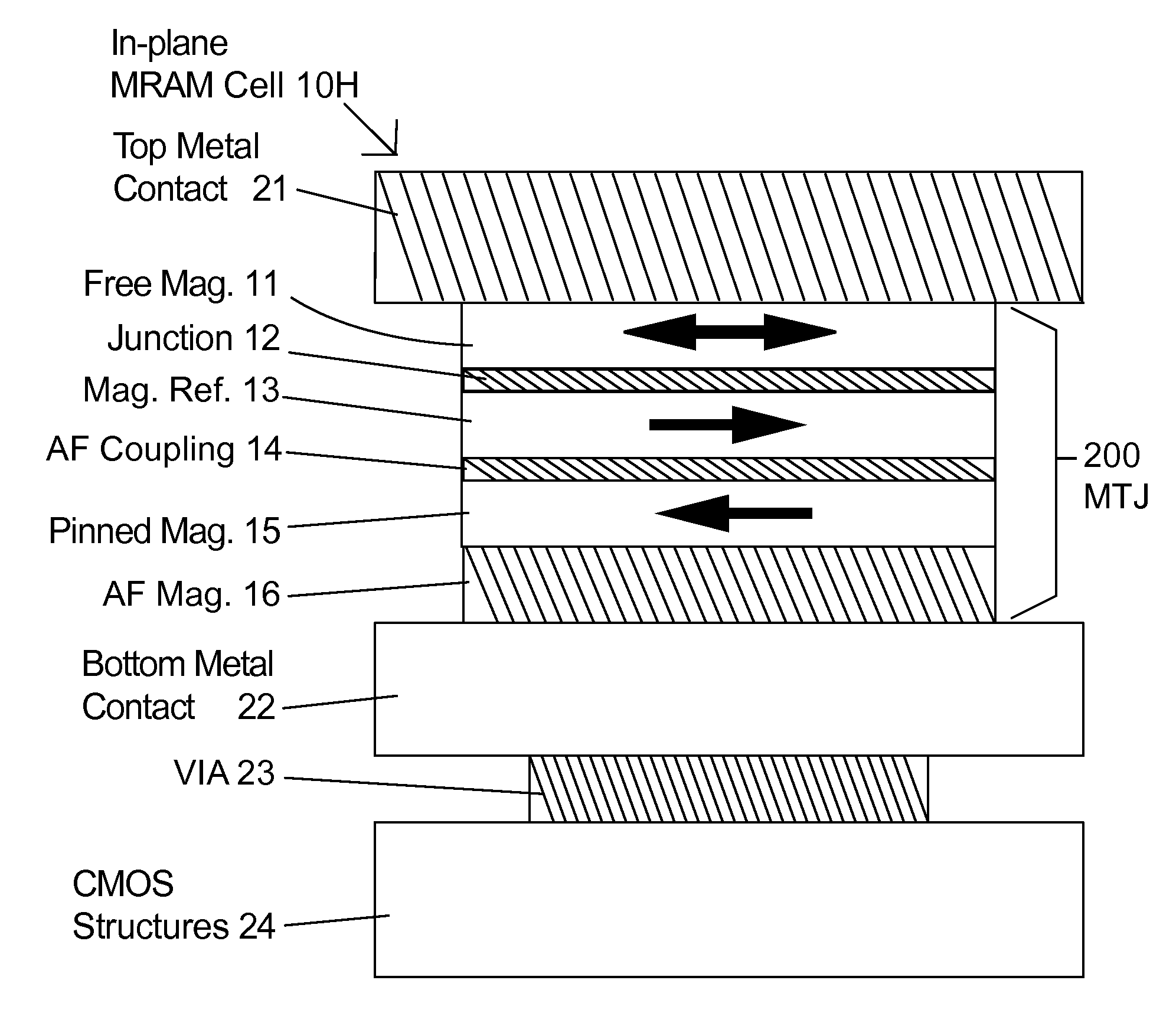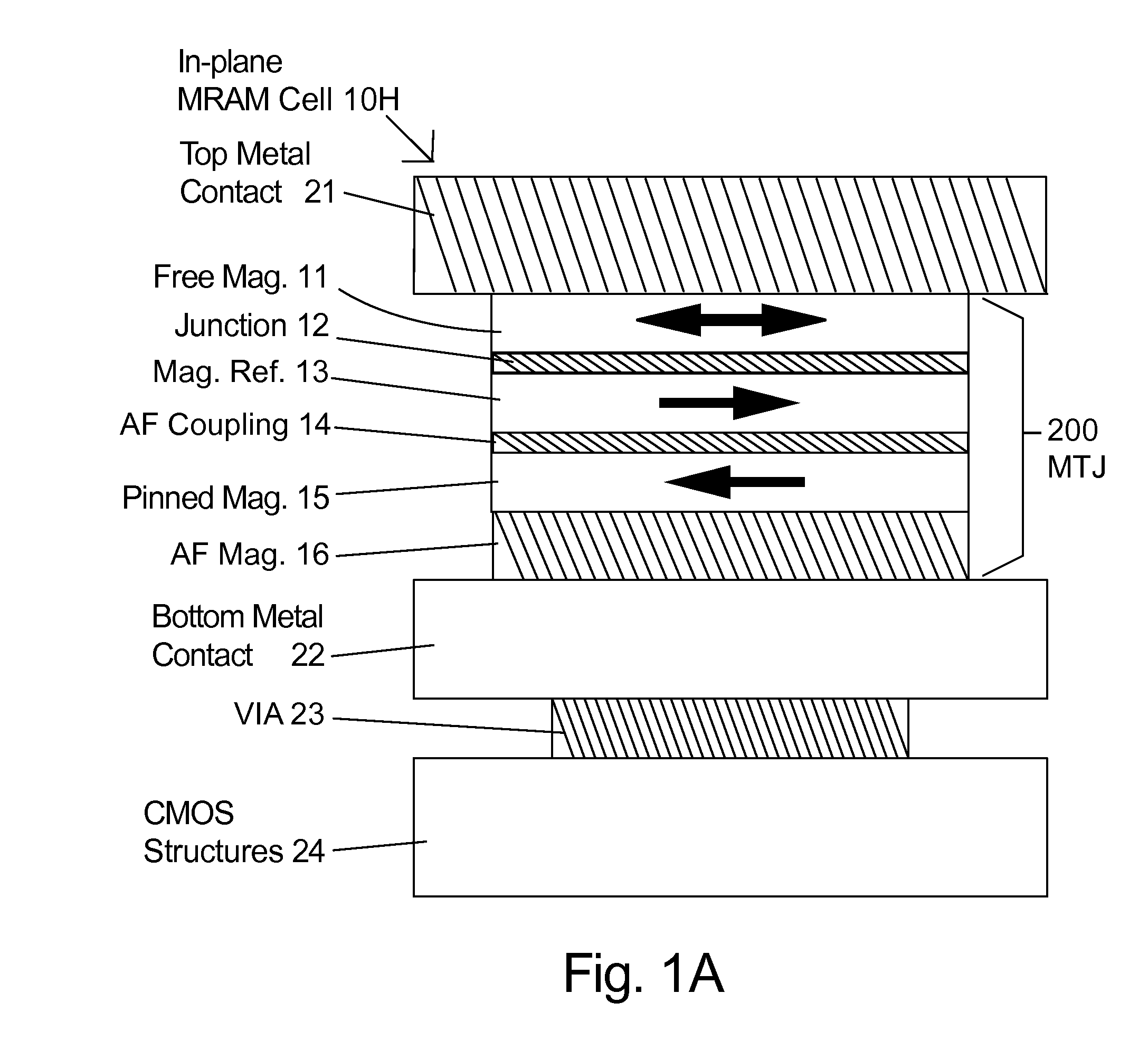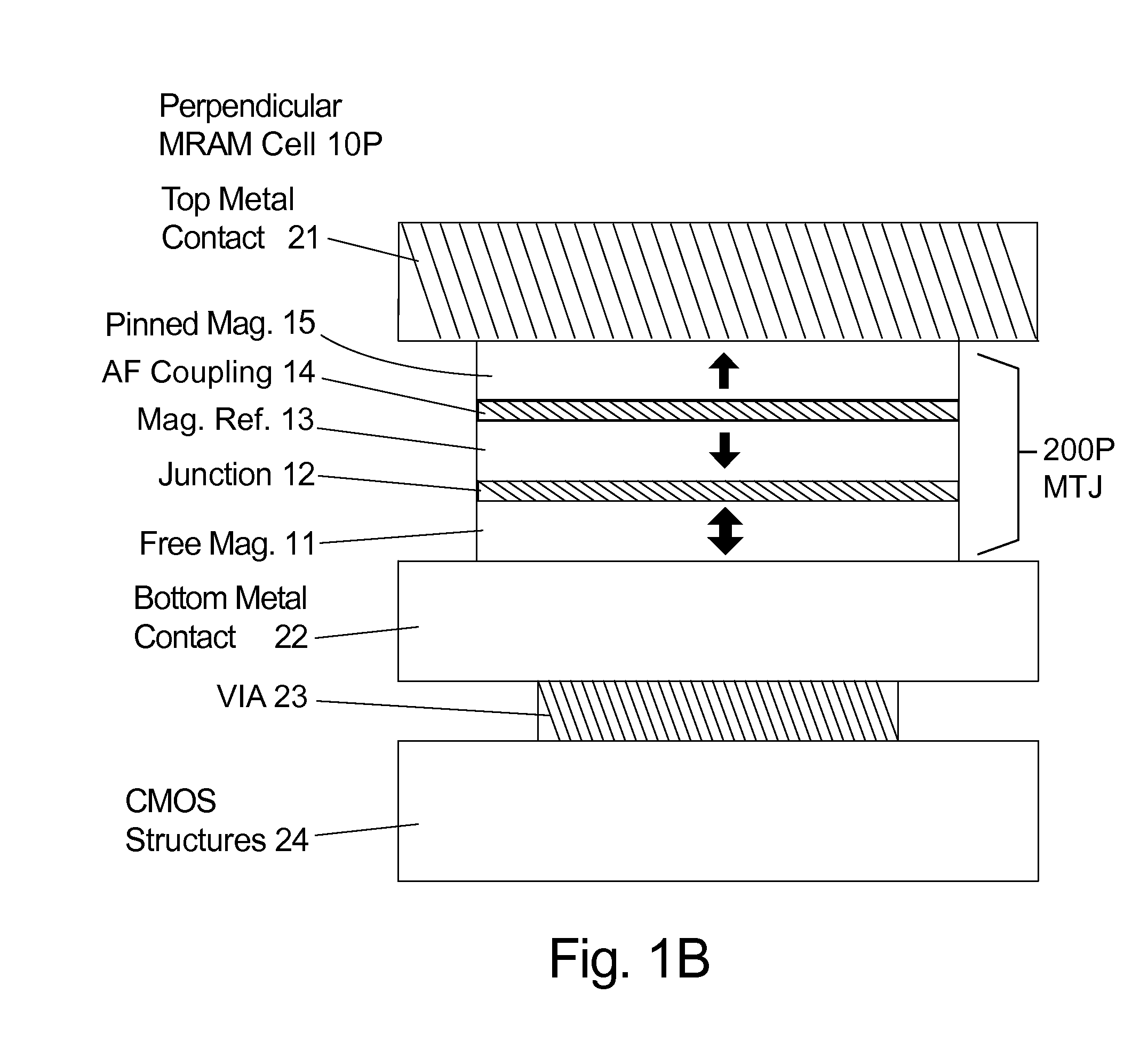Method for magnetic screening of arrays of magnetic memories
- Summary
- Abstract
- Description
- Claims
- Application Information
AI Technical Summary
Benefits of technology
Problems solved by technology
Method used
Image
Examples
Embodiment Construction
[0030]In the following description of the embodiments, reference is made to the accompanying drawings that form a part hereof, and in which is shown by way of illustration of the specific embodiments in which the invention may be practiced. It should be noted that the figures discussed herein are not drawn to scale and do not indicate actual or relative sizes. The hatching in the figures does not represent the type of material used.
[0031]FIG. 2 shows the experimental measurement results of normalized coercivity (Hc) correlation to the normalized thermal stability factor (delta) of MTJ cells in an MRAM chip. FIG. 3 shows the normalized switching current (Ic) of the same MTJ cells in correlation to normalized delta as in FIG. 2. Although switching current is a parameter easy to obtain in normal testing of memory chips, the lack of correlation between Ic level and delta established in FIG. 3 shows that Ic level cannot be used to screen out low thermal stability, e.g. delta6) that have ...
PUM
 Login to View More
Login to View More Abstract
Description
Claims
Application Information
 Login to View More
Login to View More - R&D
- Intellectual Property
- Life Sciences
- Materials
- Tech Scout
- Unparalleled Data Quality
- Higher Quality Content
- 60% Fewer Hallucinations
Browse by: Latest US Patents, China's latest patents, Technical Efficacy Thesaurus, Application Domain, Technology Topic, Popular Technical Reports.
© 2025 PatSnap. All rights reserved.Legal|Privacy policy|Modern Slavery Act Transparency Statement|Sitemap|About US| Contact US: help@patsnap.com



